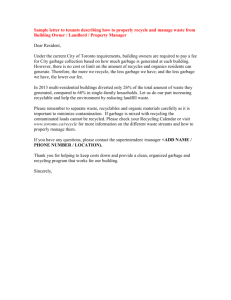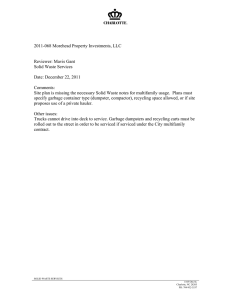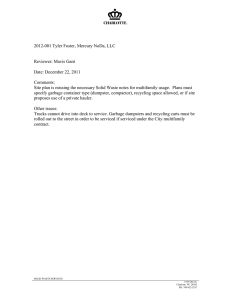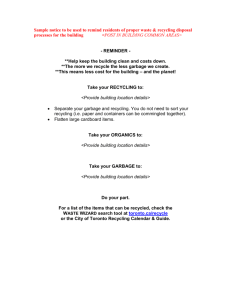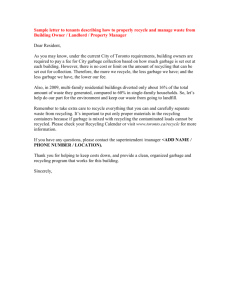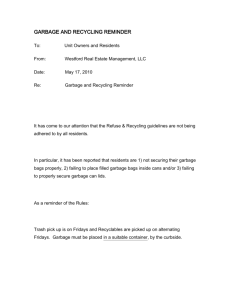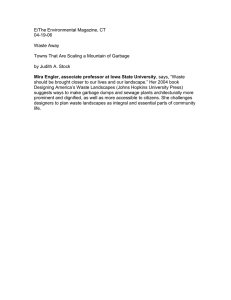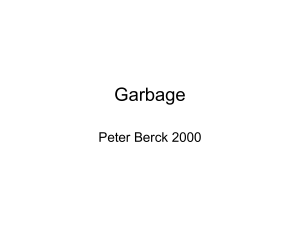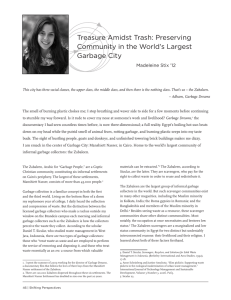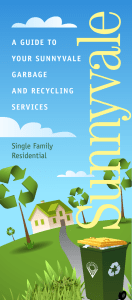Gone Tomorrow – The Hidden Life of Garbage
advertisement
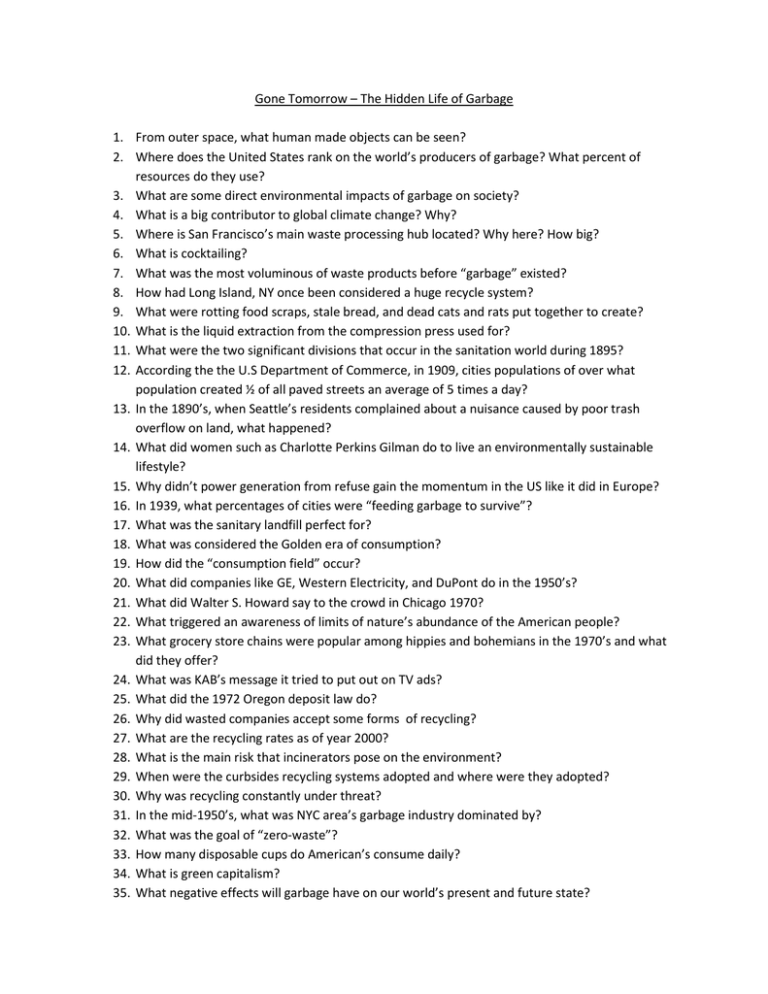
Gone Tomorrow – The Hidden Life of Garbage 1. From outer space, what human made objects can be seen? 2. Where does the United States rank on the world’s producers of garbage? What percent of resources do they use? 3. What are some direct environmental impacts of garbage on society? 4. What is a big contributor to global climate change? Why? 5. Where is San Francisco’s main waste processing hub located? Why here? How big? 6. What is cocktailing? 7. What was the most voluminous of waste products before “garbage” existed? 8. How had Long Island, NY once been considered a huge recycle system? 9. What were rotting food scraps, stale bread, and dead cats and rats put together to create? 10. What is the liquid extraction from the compression press used for? 11. What were the two significant divisions that occur in the sanitation world during 1895? 12. According the the U.S Department of Commerce, in 1909, cities populations of over what population created ½ of all paved streets an average of 5 times a day? 13. In the 1890’s, when Seattle’s residents complained about a nuisance caused by poor trash overflow on land, what happened? 14. What did women such as Charlotte Perkins Gilman do to live an environmentally sustainable lifestyle? 15. Why didn’t power generation from refuse gain the momentum in the US like it did in Europe? 16. In 1939, what percentages of cities were “feeding garbage to survive”? 17. What was the sanitary landfill perfect for? 18. What was considered the Golden era of consumption? 19. How did the “consumption field” occur? 20. What did companies like GE, Western Electricity, and DuPont do in the 1950’s? 21. What did Walter S. Howard say to the crowd in Chicago 1970? 22. What triggered an awareness of limits of nature’s abundance of the American people? 23. What grocery store chains were popular among hippies and bohemians in the 1970’s and what did they offer? 24. What was KAB’s message it tried to put out on TV ads? 25. What did the 1972 Oregon deposit law do? 26. Why did wasted companies accept some forms of recycling? 27. What are the recycling rates as of year 2000? 28. What is the main risk that incinerators pose on the environment? 29. When were the curbsides recycling systems adopted and where were they adopted? 30. Why was recycling constantly under threat? 31. In the mid-1950’s, what was NYC area’s garbage industry dominated by? 32. What was the goal of “zero-waste”? 33. How many disposable cups do American’s consume daily? 34. What is green capitalism? 35. What negative effects will garbage have on our world’s present and future state?
